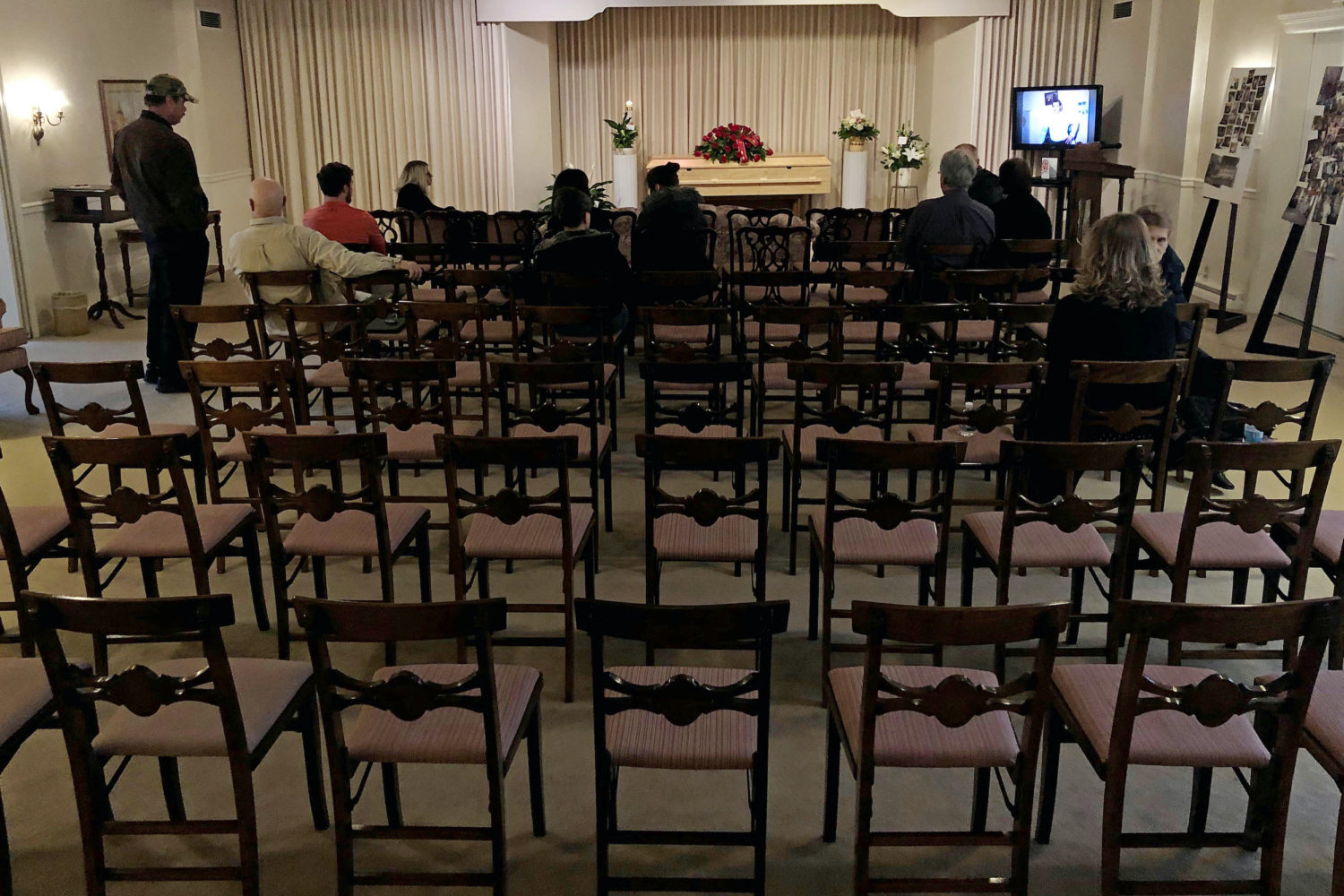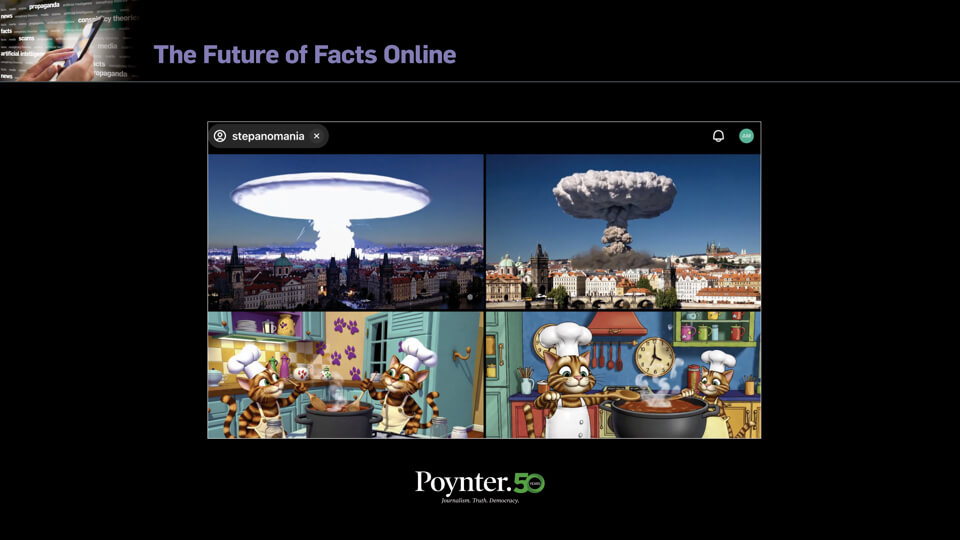 Covering COVID-19 is a daily Poynter briefing about journalism and coronavirus, written by senior faculty Al Tompkins. Sign up here to have it delivered to your inbox every weekday morning.
Covering COVID-19 is a daily Poynter briefing about journalism and coronavirus, written by senior faculty Al Tompkins. Sign up here to have it delivered to your inbox every weekday morning.
Funeral homes say they are having to limit the number of people who can attend services. Some churches have stopped holding funerals, for now, but pastors may still perform graveside services with a few others attending.
The Milwaukee Journal Sentinel reported:
“Catholics in the Archdiocese of Milwaukee will still be able to hold funerals, but attendance will be limited. Rabbis will probably stop sitting shiva at someone’s home in the event of a death. The Islamic Society of Milwaukee said in a letter that its mosque was closed, and funeral prayers could not be performed there. Funeral prayers could be held at a funeral home with just family members, the Islamic Society said, or preferably at the cemetery.”
Imagine a funeral with no hugging or physical comforting allowed.
The National Funeral Directors Association told its members that the Centers for Disease Control and Prevention has specific instructions for how funeral homes should handle preparing the bodies of those who died from COVID-19. The NFDA suggests virtual funeral services may be an option. The organization produced a number of instructional and advisory videos to help its members and has made those videos openly available.
One symptom of COVID-19: A loss of sense of smell and taste
You know the symptoms that experts have said are most common with COVID-19: a persistent cough and high fever, among others. Now, we are hearing that one of the early symptoms of the virus may include a loss of smell and taste.
The American Academy of Otolaryngology, which focuses on the head and the neck, said the knowledge of this new symptom is especially valuable because so many patients who have the virus show no other symptoms and would not otherwise know they should be tested and isolate themselves.
In South Korea, where there has been a lot of testing for the virus, about a third of those who tested positive also said they had noticed a loss in taste and smell, The New York Times reported.
Churches and charities and COVID-19
There are a lot of stories for you to cover surrounding charities and COVID-19.
Churches are in a serious economic bind. As much as churches wish parishioners would give online, in-person giving (as in tossing money in the basket) is still the main way most people make their offerings and tithes, especially in smaller congregations.
But even in hard times, Americans can be generous. During the Great Depression, churchgoers gave about 3.3% of their income to church. Before the coronavirus outbreak, that percentage had fallen to about 2.5%.
The virus hits at a particularly important time on some religious calendars, when attendance and therefore donations normally rise. Easter, one of the two biggest attendance weeks on the Christian calendar, is April 12. Ramadan, the major Muslim observance, begins April 23 and lasts for a month. Passover, observed by the Jewish faith, begins April 8 and goes until April 16.
Besides churches, charity events that are vital to the financial health of organizations have been rescheduled or canceled. Public radio stations, for example, have delayed their spring fundraising drives.
National emergencies always create opportunities for tons of fake and scam charities. GivingCompass is one place to find charities focused on helping COVID-19 victims that have been vetted as legit. CharityNavigator is also building a page for its best-rated COVID-19 related charities. Be especially careful before you give to or ask others to give to GoFundMe or Facebook appeals right now.
Over the decades, charities have been able to survive economic downturns when they stay connected with their most dedicated donors. Some charity experts said that because this “stay at home” effort and the associated economic turmoil is happening in the first quarter of the year, there will be time to recover. A similar downturn at the end of the year would be more disastrous.
That, of course, is not to say we won’t have a return of the virus later in the year.
[the_ad id=”667872″]
Now is NOT the time to cut your own hair
I know journalists are covering all kinds of heavy-duty coronavirus stories, and this one might not seem like a big deal, but I bet it would resonate with your audiences.
In the last few days, the words “pandemic bangs” have caught fire on social media.
A couple of weeks into living in isolation, some of you are reaching for the scissors and have begun trimming your own hair. My mind went back to my childhood, when my father had clippers and my brothers and I would sit down for what was essentially a military haircut — popular in rural Kentucky at the time.
Then came an invention called the Flowbee, a stay-at-home hair trimming device that, who knows, could become a “thing” again if we self-quarantine long enough. It is made in Texas and is still available. YouTube reviewers have been kind
The New York Post warned bored readers that now is not the time to trim your bangs at home:
Justine Marjan, a Los Angeles-based hairstylist who works with A-listers like Ashley Graham and the Kardashians, has a clear message for those eyeing their kitchen shears.
“I don’t know who needs to hear this, but this is not the time to cut your bangs at home,” she posted on Instagram with a video of herself mimicking a viral hack for at-home bangs, called the twist method.
All of this is no joke for the people who cut and style America’s hair. USA Today reported:
“My clients are calling me and they’re freaking out,” says Rick Wellman, a busy colorist at his salon in Saks Fifth Avenue in New York, which like most businesses in the city has been shut down. “A lot of my clients come in every four weeks when their roots come in, it’s like clockwork.”
It’s not clear exactly how many salons are closed or closing among America’s estimated 1.3 million beauty establishments, which range in size from a few chairs and independent stylists to huge chain operations with hundreds of employees.
A friend of mine recently observed that “soon we will know people’s real hair color.”
If you are considering coloring your own hair, colorist Janelle Kemp of midtown Manhattan’s Guy Thomas Salon said you should maybe rethink it. She told the New York Post that a bad dye can be a really expensive mistake to fix.
“Corrective color can run three to four times what a normal visit can cost,” says Kemp, whose high-profile clients have ranged from CEOs and sports icons to Sir Paul McCartney. “It can run from $500 to $600. And even then, it might not be back to normal and can take a few sessions.” In the meantime, she prescribes root touch-up powders — and patience.
“It’s awful and we empathize,” she says, “but it’s so not worth” ruining your hair over.
Or, if you just have to cut your own hair, the most common advice I have seen says:
- Your stylist may cut your hair while it is wet, but you should dry and style it first. If you cut your hair wet, you probably will cut off too much.
- If you trim your bangs, do a little at a time and remember that when you pull them down they will dry shorter, which is a reason not to cut them while they are wet.
- You can make your hair color last longer if you use dry shampoo or just don’t wash as often as usual. Everybody is going to look a little gross before this is over, so just relax.
Engage the audience
It has been fun to watch friends post photos and videos of themselves as they cook new things at home. Some are really impressive. I would think it would be great fun to have people send in their most impressive dishes and maybe even some disaster dish contributions.
[the_ad id=”667878″]
How about rating drive-thrus?
Since so many people are doing drive-thru and takeout meals right now, it seems like a good time to have food critics focus on carry-out food. Of course, Yelp serves some of that function, but I think you could do better.
Since we are not having a March Madness tournament, maybe you could build a bracket and have people vote every day to get a “best carry-out” or “best drive-thru” or “best home delivery” restaurant for your town.
I imagine the brackets as being something like “ethnic,” “comfort,” “fast,” “upscale.” In some parts of the country it would have to include regional must-haves like seafood, BBQ and sushi. New Orleans would be very different from Fargo (which by the way, has some good food).
It would be controversial. It would stir emotions and loyalties. These are exactly the kind of distractions we need right now.
It might also stimulate people to try places they had not considered and might give some businesses a little boost when they need it.
We’ll be back tomorrow with a new edition of Covering COVID-19. Sign up here to get it delivered right to your inbox.
Al Tompkins is senior faculty at Poynter. He can be reached at atompkins@poynter.org or on Twitter, @atompkins.







